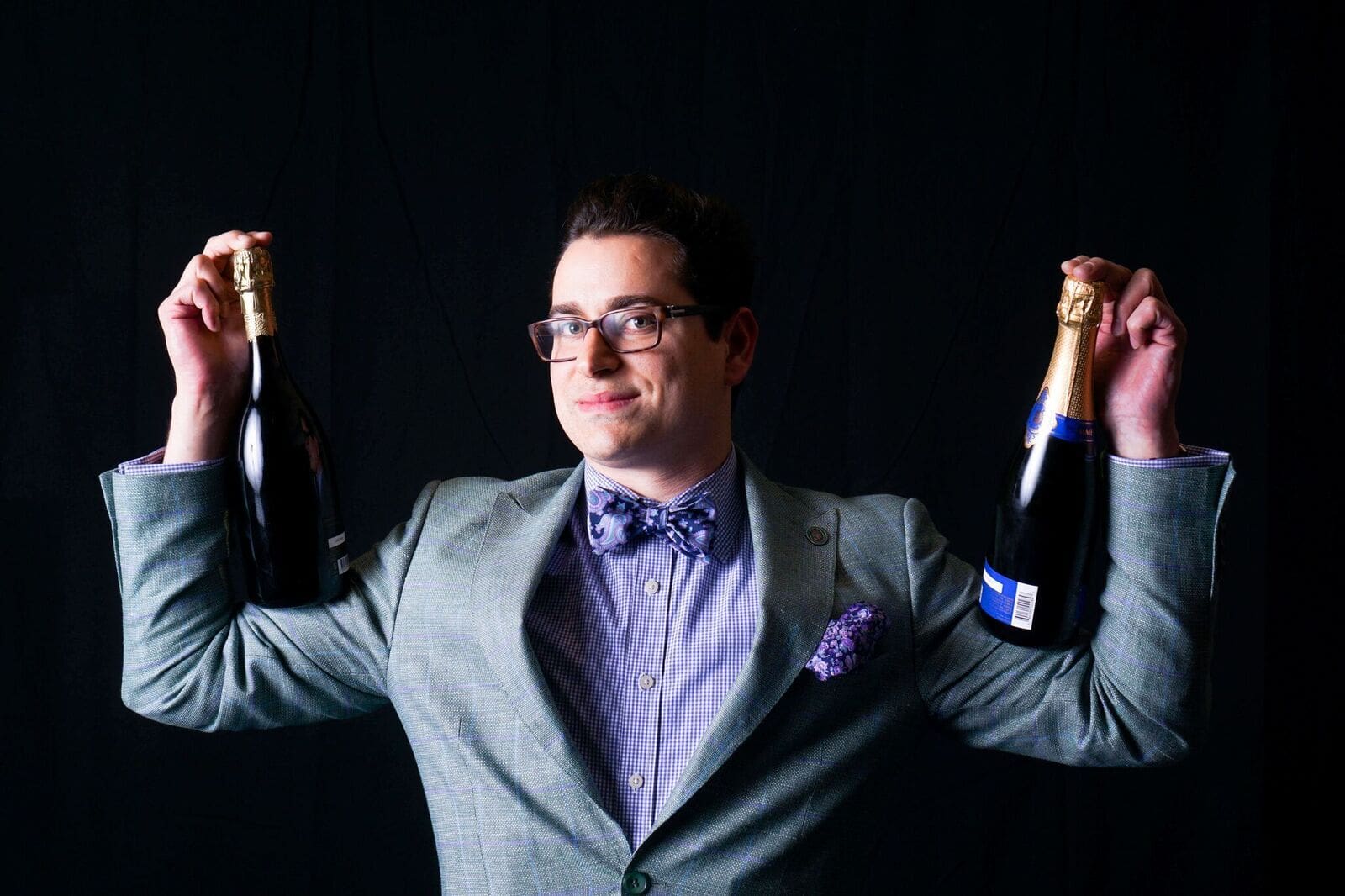
Photography by Josue Castro
Internationally acclaimed sommelier Erik Segelbaum began his career as a fine-dining chef before making his way into the world of wine. Since then, he’s done everything from serving as head somm aboard The World, the 644-foot private residential yacht that circumnavigates the globe, to overseeing vino for 38 eateries for Starr Restaurants. Most recently, he launched his own consulting biz, Somlyay, and was named one of 2019’s top somms by Food & Wine. On May 4, he’ll be in Minneapolis to host Wine Riot 2.0, a oenophile extravaganza that hits six U.S. cities. Ahead of his Twin Cities appearance, we got his take on the biggest wine secrets, the myths he’d like to bust and the trends he’d like to see disappear.
Food & Wine recently named you a sommelier of the year. What does this honor mean to you?
Actors have the Oscars, musicians have the Grammys and sommeliers have this. It feels like a huge achievement, and it is certainly a benchmark in my career. Being a sommelier is so much more than knowing a lot about wine, cocktails or regions. It means being hospitable and personable, and taking care of guests. It’s an honor to be recognized and highly regarded in the industry.
You began your career as a chef. How does that influence your work as a somm?
I firmly believe that my experience as a chef is one of the key contributors to my success as a sommelier. As my palate developed, my drinking habits changed from drinking for alcohol to drinking for taste. Being a chef exposed me to so many different flavors and helped me build a massive flavor library. This experience gave me a leg up when it came to deducing subtle flavors in wine.
What’s the biggest secret in the wine world?
Wine is not nearly as “hard” as anyone would make you believe. Even though sommeliers devote their lives to the subject, they do this so that other people don’t have to. I have a great desire to help make wine more accessible to a broader audience. I found a wonderful career in wine and love sharing moments of discovery with other people as they explore new things or taste old favorites. Though no one is an expert from day one, anyone hoping to learn about wine can do so one step at a time. Don’t listen to preconceived notions; it can be easy to understand if you’re willing to dive in with an open mind.

The biggest myth?
One of the biggest myths (or more accurately, misconceptions) is that Riesling is sweet. Riesling can be sweet but usually isn’t. The reason people are confused about this is that Riesling is naturally prone to ripe fruit-forward flavors such as yellow peach, fruit cocktail, pears in syrup, honey, etc. Every time you’ve tasted these things, your brain tells you they are sweet. Therefore, when you perceive these flavors in a wine, your brain tricks you into thinking that the wine is sweet.
What wines are you loving right now?
Anything Riesling — always! Additionally, I’m a huge fan of Madeira. It is so much more versatile than people think. While it has a reputation as a dessert wine, most great Madeira are far from sweet. You haven’t lived until you’ve eaten an oyster then drank Sercial Madeira out of its shell. Other pairing favorites of mine include Verdelho Madeira with fried chicken and Bual Madeira with grilled meats. I’m also a huge fan of drinking lighter bodied, higher acid reds fully chilled. It makes them deliciously refreshing.
What wine trends can’t you wait to see disappear?
The term “natural wine” can be misleading. When a wine happens to be made naturally and is delicious, that’s great. However, many winemakers confuse their desire for minimal intervention with their obligation to make a delicious, flaw-free wine. It’s irresponsible to suggest that nature can do all the work. Nature makes vinegar; human intervention makes wine. I’m not a fan of people accepting flawed wines just because they are “natural.”
Another thing that needs to disappear is the term “rosé season.” People seem to associate drinking rosé with warm weather. In fact, rosé wines have more year-round utility than most whites do. As demand for rosé continues to grow exponentially, there are more and more wines coming to market. However, there is often a lacking commitment to quality. This is because many consumers want to drink pink. They drink rosé the color rather than quality rosé wine with varietal and regional characteristics.

What do we have to look forward to at Wine Riot 2.0?
I’m most excited about giving guests the opportunity to learn and taste wine in a meaningful way. This is my first year hosting Wine Riot, and I’m thrilled to bring it to Minneapolis. It’s completely different from other wine events. In addition to being a great time, there’s a real educational component.
We dive deep into varietals and regions, and touch on topics such as dry vs. sweet and Old World vs. New World. There’s a scavenger hunt that encourages people to immerse themselves in different experiences as well as some fun stage content and competitions. Wine Riot aims to provide guests with useful knowledge and ultimately improve everyone’s understanding and enjoyment of wine.
Erin Rolek of Bachelor Farmer is recruiting some of the best somms in town, who will be roaming the event answering questions. So come ready to ask an expert anything you’ve ever wanted to know about wine. At Wine Riot, we will fill your glass and your mind!
Find more information about Wine Riot 2.0 and purchase event tickets here.


